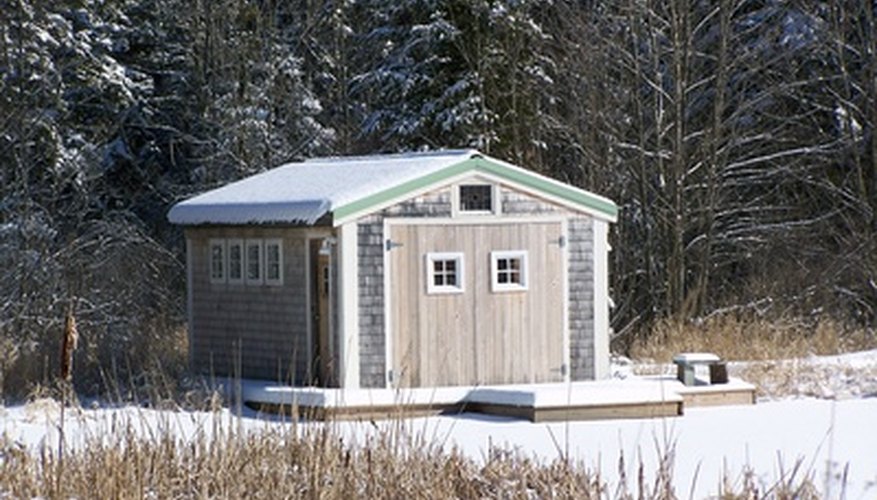Shed doors often sag over time. They're usually wider than normal doors so you can fit a lawnmower or large tools inside, yet the builder may have tried to keep costs down and designed the doors with insufficient bracing. Over time, the doors sag and eventually they no longer align with the door frame, dragging on the sill each time you close them. A wire and turnbuckle will raise the lower edge and pull the doors square again.
- Shed doors often sag over time.
- A wire and turnbuckle will raise the lower edge and pull the doors square again.
Measure each door diagonally from the hinge side at the top, to the bottom corner where the door drags the sill. Divide the length in half and add two feet. Cut four pieces of 1/8-inch diameter metal cable to that length.
Run one end of the cable through one eye of a turnbuckle, bend it in a loop and fasten it to itself with a cable clamp. Repeat with another length of wire on the other eye of the turnbuckle. Unscrew the turnbuckle so the eyes are as far apart as possible.
Prop up one of the sagging doors to the height you want by tapping a block of wood under the end away from the hinges. Drill a small pilot hole for an eye screw in the top corner near the hinges and in the lower corner away from the hinges. Choose an area within a few inches of the corner where there's solid, thick wood. Screw an eye screw into each pilot hole.
- Run one end of the cable through one eye of a turnbuckle, bend it in a loop and fasten it to itself with a cable clamp.
- Drill a small pilot hole for an eye screw in the top corner near the hinges and in the lower corner away from the hinges.
Attach the ends of the cables to the eye screws with cable clamps, leaving as little slack in the cable as possible.
Turn the turnbuckle to tighten it, holding the cable at the clamps with pliers if necessary to prevent them from turning too. Remove the prop from under the door and tighten the turnbuckle further if necessary, until the door no longer drags on the sill and hangs square in its frame.
Repeat for the other door.
